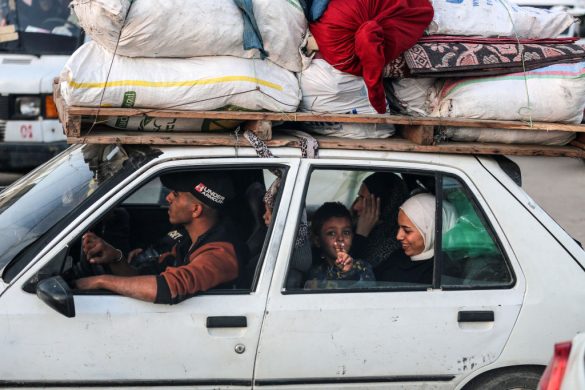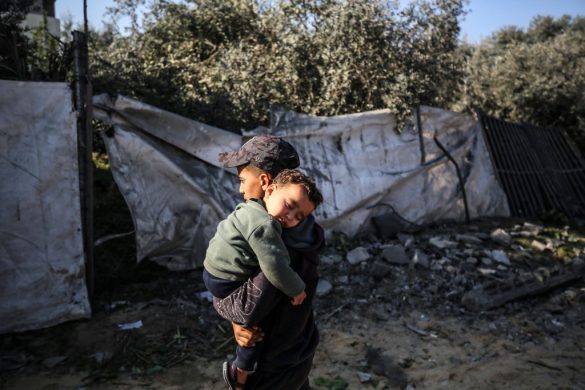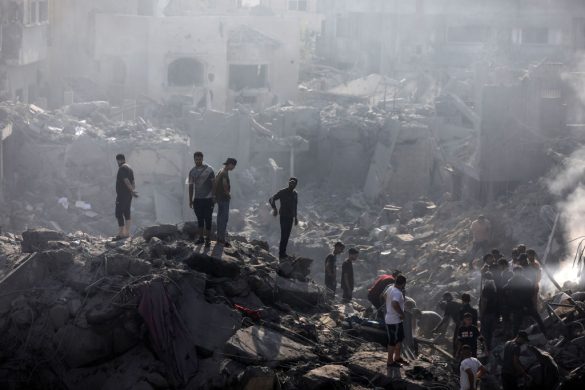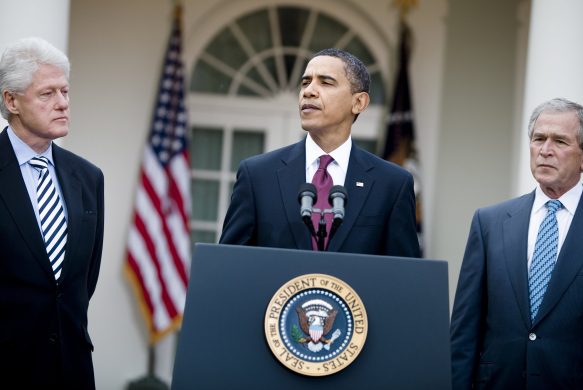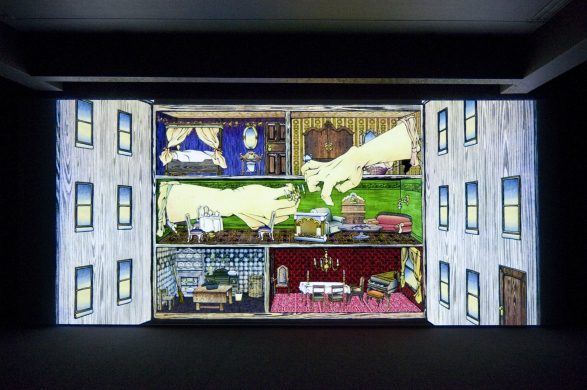Tawerghaerne er et lille mørklødet mindretal på 42.000 i kaotiske Libyen, hvor ingen har tid til at bekymre sig om deres triste skæbne, fordi de forbindes med Gaddafi-styret – resultatet er, at 35.000 af dem lever i lejre tre år efter Gaddafis fald og bistandsdonorerne er totalt ligeglade.
TRIPOLI, 10 December 2014 (IRIN): – “I am tired. I want to go back to my homeland in Tawergha [town in northern Libya]. Everything is bad: my room is full of water when it is raining and I don’t have money… I just want to go home,” Hamama Said told IRIN.
The grandmother, who is aged somewhere between 60 and 65 – she is not quite sure – has lived in a displacement camp near Tripoli Airport for three years.
The Tawergha minority, darker skinned due to their ancestral links to slaves brought to the country in the 18th and 19th centuries, have long faced discrimination in Libya, but this has intensified in recent years and they were accused of siding with the Gaddafi regime during his overthrow in 2011.
“Siding with the Gaddafi regime”
The ousted dictator used the town of Tawergha, about 40 km south of Misrata, as a military base during his resistance, but in August 2011, Misrata militias entered the town and burnt it to the ground, causing 42,000 Tawerghans to flee.
Three years on, an estimated 35,000 of those diplaced people are still sheltering in temporary camps in Tripoli and Benghazi, according to local agencies.
They claim they have been neglected both by the international aid community and the various factions that now make up Libya’s parallel governments.
“Last year, the UN Refugee Agency brought us nylon tents, kitchen kits and heaters. But this year we have received nothing from any organizations,” said Mabruk Eswesi, the chairman of Al-Saber Association, made up of Tawergha volunteers living in camps for the displaced.
“We are facing difficult times with political and humanitarian issues,” he added.
“We are afraid of the new government supported by Fajr Libya,” explained Issa, a displaced in his early twenties, referring to the authority now in control in the capital. “If we go to downtown they could arrest us just because we are black and from Tawergha,” he said.
Younis Abdallah Youssef, head of the primary school inside the camp, told IRIN: “We talk but there is nothing to do. We have no help from the government or even our local council. The only measure we can take is to dig furrows inside the camp to drain off rain water if it is flooding.”
No aid since February 2014
Fern Tilakamonkul, a UN Refugee Agency (UNHCR) spokesperson for Libya, confirmed no aid had been provided to the Tawergha camps since February 2014.
The deterioration of the security situation in Libya earlier in the year means that most international aid organizations are now running operations remotely from Tunisia, although the UN, working as a joint humanitarian team, has made some distributions.
Tilakamonkul said UNHCR and partners delivered core relief items to 12,000 displaced people in mid-August in the city of Zawyia, 45km west of Tripoli, and in mid-September took items such as mattresses and hygiene kits went to 6,700 to people recently displaced from Washerfana, a suburb of the capital.
“The security situation is very difficult and our national staff are not able to move freely so we are looking for NGOs partners to assist with distributions to vulnerable communities of IDPs in Tripoli,” she explained. “We are looking at this at the moment and we hope, if we can find some funding, to be able to do a distribution in the coming weeks.”
Similar studies were ongoing in the East to find local partners and distribution channels,” she added and she said: “In the South, where the clashes have started again since mid-October, UNHCR is monitoring the situation.”
—————–
LIBYA’S POLITICAL BREAKDOWN
Since summer 2014, a series of military putsches has divided Libya, leaving it with two governments and a multitude of militia groups.
One government is in Tripoli, led by Prime Minister Omar al-Hassi and backed by the pro-Islamist General National Congress (GNC). The government and the GNC are supported by Fajr Libya (“Libyan dawn”), an Islamist-leaning coalition of hardliners-revolutionaries. Turkey and Qatar support these Tripoli-based institutions.
The other is based in Tobruk, in the far east of the country. It was appointed by the House of Representatives. Both institutions have support from Zintanis and General Khalifa Haftar-backed armed groups in Libya. Outside the country, they are supported by foreign countries like Egypt, Saudi Arabia and the United Arab Emirates. The Tobruk-based government is recognized by the UN, but al-Hassi’s government is not.
An estimated 2,595 Libyans have died due to violence during 2014, according to Libya Body Count, an NGO keeping a tally of deaths.
———————
In October the UN Office for Co-ordination of Humanitarian Affairs (OCHA) launched an appeal for 35 million US dollar for Libya.
To date it has not received a single cent, according OCHA’s Financial Tracking Service (FTS), and it is the only appeal globally not to receive any support.
Despite several attempts, IRIN was unable to reach anyone from the Libyan Humanitarian Relief Agency (LibAid), which appears to have ceased many of its operations due to a lack of funding.
Benghazi Tawergha
Læs videre på
http://www.irinnews.org/report/100931/libya-s-sidelined-idps





